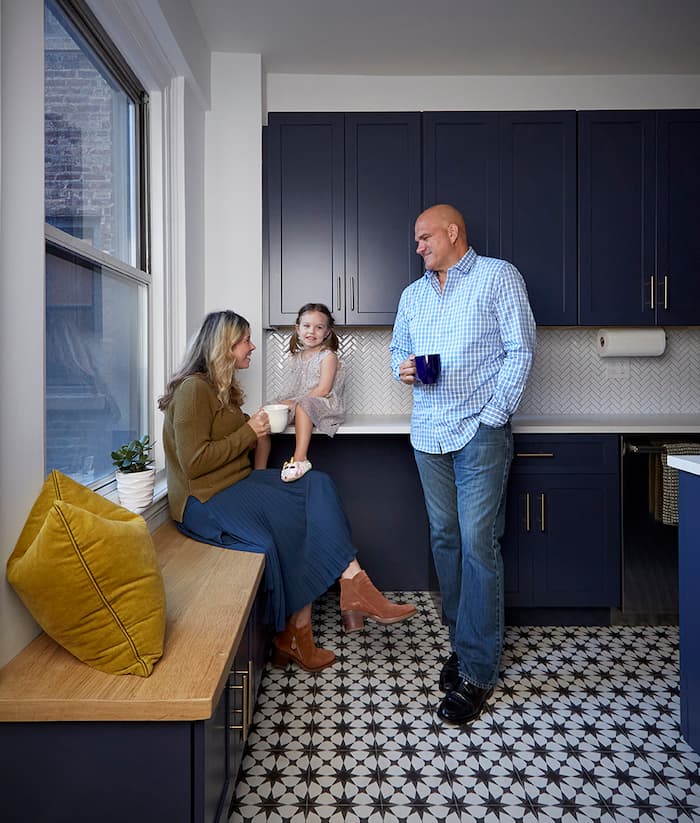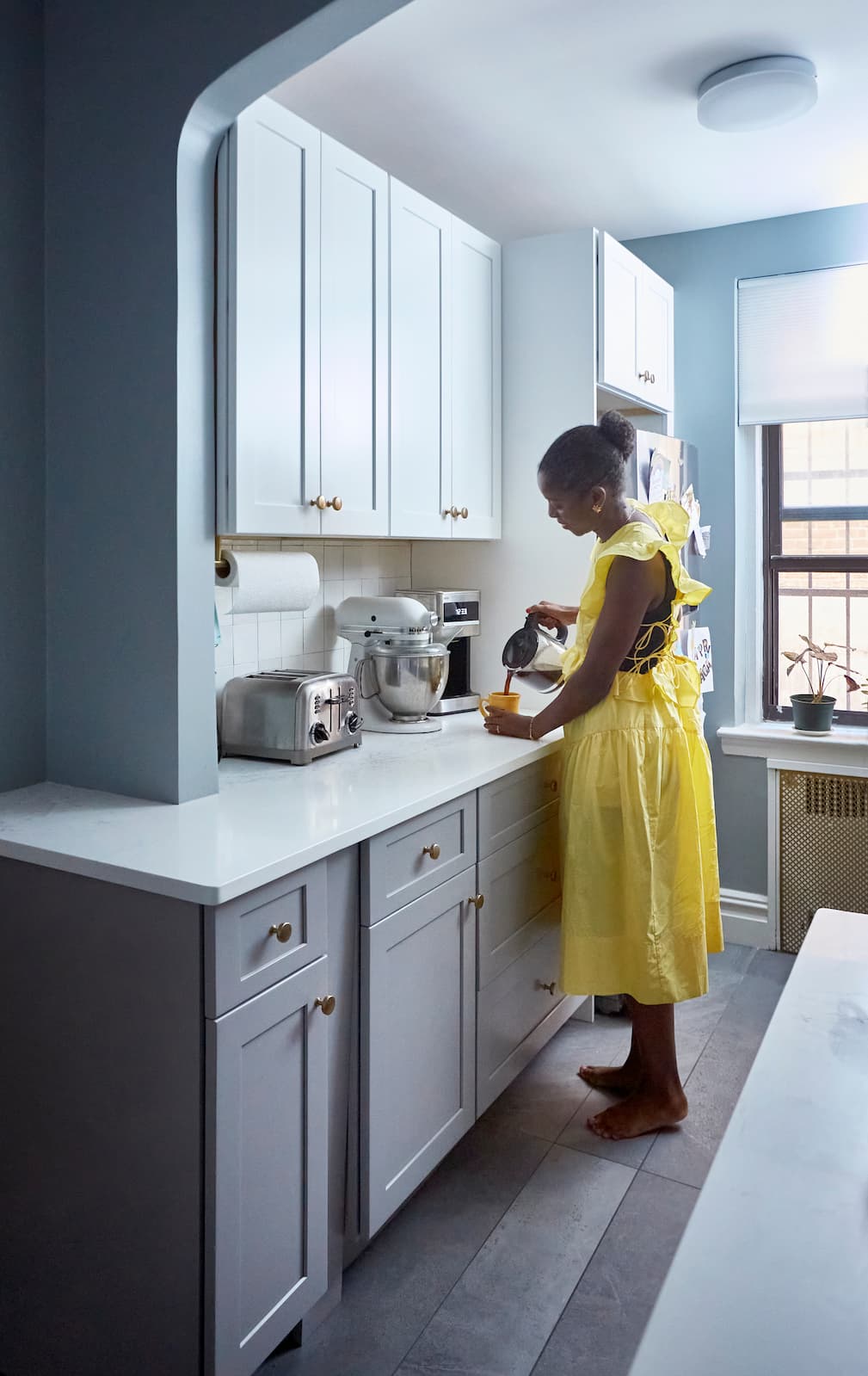Increasing the height of your ceilings is one of the most transformative structural renovations you can make to a home. Whether you want to create an airier great room, add drama to a kitchen, or bring an outdated basement up to modern standards, a ceiling lift can enhance natural light, improve resale value, and dramatically change how your space feels. However, this is a complex project with significant costs, engineering demands, and potential trade-offs.
Before you start making plans to raise your ceiling height, here’s what to know:
- Not every method may be an option for your home: The structure, age, and layout of your home will determine what techniques are possible—some ceilings simply can’t be raised without prohibitively high costs or engineering challenges.
- There’s always a trade-off: Raising ceiling height almost always impacts adjacent rooms, energy efficiency, overall home volume, and can sometimes reduce upper-floor space or storage. Consider how the change will affect heating/cooling costs, sound transfer, and future renovation needs.
- Permitting and engineering are non-negotiable: Structural changes, including moving load-bearing framing or touching the roof, will require engineering and city permits. Navigating this process can add time and cost but is essential for safety and value.
- Access to mechanical systems may be affected: Plumbing, ductwork, and electrical runs often live in ceilings. Plan for design and labor costs tied to relocating, resizing, or updating these systems.
- Costs can be substantial and variable: The price to raise a ceiling can range from a few thousand dollars for removing a drop ceiling, to hundreds of thousands for a major structural modification such as vaulting a living room or lifting an entire roof.
Raising a ceiling vs. raising a roof
When people talk about increasing ceiling height, they often confuse raising a ceiling (modifying interior framing) with raising a roof (lifting the exterior structure).
| |
Raising a ceiling
|
Raising a roof
|
|
What it means
|
Modifying or removing interior ceiling joists or attic floor framing to gain headroom, often by creating a vaulted or cathedral ceiling.
|
Detaching and lifting the actual roof structure, sometimes replacing it, to increase overall wall and ceiling height throughout the space.
|
|
Typical cost
|
$10,000–$40,000 (varies by scope/room)
|
$50,000–$400,000+ (for whole house or major addition)
|
|
Disruption
|
Moderate; impacts room below
|
Major; may require vacating house
|
|
Common obstacles
|
HVAC, wiring, plumbing, structural beams
|
Matching roof pitches, structural integrity of walls, weatherproofing
|
What raising a basement ceiling may entail
Basement ceiling height is a common frustration in older homes, but “raising” a basement ceiling typically involves one or both of two major renovations: lowering the floor (underpinning) or rerouting/flattening mechanical runs. Here’s how the process often goes:
- Evaluation: Contractors start by evaluating the foundation, floor slab, and headroom. Structural engineers may be brought in to determine feasibility and design support plans.
- Underpinning or floor lowering: If physically raising the ceiling isn’t possible, contractors may excavate below the existing slab (“underpinning”)—digging deeper to pour a new lower floor. This is expensive, time-consuming, and requires shoring up foundation walls to avoid structural issues.
- Relocating mechanicals: Ducts, plumbing, wiring, or old beams that drop below the ceiling may need re-routing—replacing large ducts with slimmer, high-velocity systems, or fully re-framing parts of the ceiling to tuck utilities closer to the floor joists above.
- Finishing work: Once framing and utilities are updated, new drywall or drop ceilings are installed at the new (higher) level. Insulation, waterproofing, and egress windows may also be updated to bring the basement up to code and make the space livable.
- Permits and inspections: Basement ceiling projects must pass strict codes for ceiling height, fire safety, and structural integrity. Be prepared for multiple inspections.
Basement ceiling projects are among the most expensive and complex, often running $50,000–$100,000 or more. They’re best done in conjunction with full basement renovations.
What raising a primary floor ceiling involves
Raising ceilings on main floors can involve multiple techniques depending on the home’s structure:
- Removing a drop or false ceiling: In some homes, ceiling height is artificially reduced by a dropped grid or finish. Removing these can add several inches or more of height with less disruption and lower cost.
- Vaulting a ceiling: For homes with attics or unused roof space, it may be possible to remove the flat ceiling joists and expose the roof’s angle—creating a cathedral or vaulted ceiling. This requires careful reframing, reinforcing or replacing rafters, and relocating insulation, wiring, and HVAC runs.
- Structural changes: In all cases, contractors will address load-bearing walls, install new beams or posts as needed, and ensure the new framing directs weight safely down to the foundation.
- Finishing and mechanicals: Raising ceilings may require new drywall, insulation, paint, trim, stair modifications, and extensive rerouting of electrical, plumbing, and HVAC systems to fit the new profile.
- Permits and code compliance: Structural inspectors, engineers, and sometimes historic review boards will need to sign off on all work.
- Lifting the roof: The most drastic option, primarily for single-story homes or major remodels, involves jacking up the entire roof structure and building taller walls beneath, or fully replacing the roof structure with a new profile. This is expensive, disruptive, and must be engineered to tie into the rest of the house.
Costs for these renovations can vary widely—from $10,000–$30,000 for a single-room vault, to over $100,000 for comprehensive roof lifts or multi-room modifications.

Visual tricks to make rooms feel taller
If a major construction project isn't feasible, the right design moves can create the sensation of greater ceiling height and openness. Simple visual strategies can make even the lowest rooms feel lighter, more spacious, and more inviting, regardless of the home’s existing architecture.
- Use vertical lines and tall decor: Install vertical wood wall paneling, tall bookshelves, or floor-to-ceiling drapes. These elements guide the eye upward, stretching the visual perception of a room’s dimensions. Vertical details also introduce a sense of rhythm and sophistication, making a modest room feel thoughtfully designed.
- Paint ceilings and crown moldings a lighter shade: Using white or just a shade lighter than your wall color makes the ceiling seem to recede. The reduced contrast between wall and ceiling further enhances the atmospheric height. This technique works well in any style of home, softening sharp transitions for a more seamless flow.
- Uplighting and hidden lighting: Place floor lamps, wall sconces, or LED strips that shine upward to gently illuminate the ceiling. Lighting the upper part of the room helps blur the boundary and visually lifts the ceiling plane. Subtle uplighting can give even evening rooms a soft, open glow that feels like daylight.
- Avoid heavy ceiling fixtures: Skip bulky chandeliers or oversized fans which occupy the central ceiling space. Sleek, surface-mounted fixtures or recessed lighting will make the room feel more open and airy. Minimizing ceiling clutter creates an uninterrupted visual field, helping any ceiling feel as high as possible.
- Emphasize window height: Use tall window treatments or raise curtain rods close to the ceiling, framing the windows from the very top. This stretches the appearance of both the walls and the opening, contributing to the illusion of a loftier room. Flowing panels also add elegance and can visually connect vertical spaces throughout your home.
- Continuous wall colors: Use a single wall color from floor to ceiling without a break for trim. This seamless transition erases visual boundaries and makes the room feel unbroken and thus, taller. Unifying color across surfaces removes the horizontal stops that can visually “cut off” the height of a space.
- Minimal, raised-base trim: Opt for baseboards, door frames, and window casings with slim, minimal profiles or that are mounted a few inches above the floor. This little detail raises the perceived starting point of the wall, making the vertical span of the wall look greater. When paired with pale paint or a continuous wall color, this trim approach subtly lifts the room’s overall proportion.
- Create recessed or tray ceilings: When remodeling, add architectural interest with a recessed or tray ceiling, which steps upward from the standard ceiling line. Even a shallow tray creates a sense of extra volume and draws the eye upward to the ceiling’s highest point. Incorporating indirect lighting within the recess enhances depth and amplifies the airy effect.
- Use open shelving instead of upper cabinets in kitchens: Instead of installing blocky upper cabinets that stop short of the ceiling, opt for open floating shelves that run nearly all the way up. This leaves wall space unbroken, extends lines vertically, and provides a lighter, more spacious feel in compact kitchens. Door-free cabinets also bring a modern touch and are flexible for showcasing decor or everyday essentials.
Find a contractor you can trust with Block Renovation
Choosing to raise your ceiling height—or even to maximize the effect through strategic remodeling—can radically improve the comfort, appeal, and value of your home. Yet because this type of project impacts your home’s structure, safety, and everyday life, the experience and integrity of your contractor are vital. A communicative, trustworthy contractor not only manages the technical complexities with care, but also keeps you in the loop, answers your questions honestly, and reliably addresses concerns as they arise. With the right partner, you’ll gain confidence at every stage—knowing your vision, budget, and timeline are all being respected. In the end, a strong contractor relationship doesn’t just shape the outcome; it makes the journey smoother and your investment worthwhile.

Written by
Block Renovation
Block Renovation personalizes home remodeling with free AI-powered design tools and a vetted contractor network, helping homeowners plan, visualize, and build with confidence.












